Importance of understanding the consumer behavior
Introduction
The current global market has become very competitive, with various companies trading on similar products. In order to survive in the competitive market, a company has to understand the behavior of the customers and the forces that affect such behavior (Varey, 2002, p.70).
There is need to understand why a customer can prefer a given brand of product to the other brand in the market. The production of products and services that satisfy the needs of the customers requires an understanding of the consumer behavior and the associated cultural beliefs that influence such behaviors (Wright, 2006, p.1). The understanding of these market forces will enable the company to predict the market trend and make an appropriate marketing strategy to be adopted in the future.
Market segmentation
Segmentation of a market refers to the subdivision of the market into smaller consumer groups with distinct needs of the products and services in the market (Smith & Taylor, p.37). This practice will enable a company to understand the consumer needs and even the additional applications that their products can have.
Ideally, segmentation is carried out with the needs of customers in the target market in mind, i.e. subdividing the market in terms of similarities of customers within each segment (Rudra, 2008, p.1). The market of a given product can be segmented based on the gender, age, level of education, and the geographic location of the consumers. It can also be segmented based on the financial ability of the consumers.
The fashion industry is an international sector that attempts to meet the apparel demands and determines the kinds of clothes to be put on. It comprises all the activities in production of the raw materials for clothing, designing the apparel, advertisements of the finished products, and their final marketing. It is one of the fastest developing industries in the world with most of the people struggling to match the trends in the industry.
Casual wear is more relaxed kind of attire that puts no emphasis on some kind of uniformity. It does not also provide for some kind of formal presentation like a bank’s relationship officer in a black suit. Casual wear is the sub sector in the fashion industry that is more sensitive to the changes in clothing styles. There have been changing trends in the casual wear for both men and women, and an apparel company needs to understand respond to the changes.
There are different apparels for men, women, children, and babies. Thus, the first segmentation is witnessed among gender followed by the age factor. The value and quality of the products also lead to segmentation based on the individual incomes of the consumers.
Most of the apparel companies have established a geographic spread of branches globally, thus implying that the different locations and the subsequent cultural differences provide market segmentation (Solomon, 2003, p. 67). The market segmentation enables the companies to deal with the segments on different bases.
Targeting
A company needs to identify the diverse consumer needs and strategize on measures that attempt to satisfy the needs. In this sub sector, much emphasis is given to style, fashion, and value quality of the products across the ages and for both gender. Further, more stylish and fashionable products should be given for the women, since this gender is more sensitive to the constant development in styles and fashion for the casual wear. However, the apparel and other accessories for men and children also need to be incorporated.
Positioning
The position of a product in the market refers to the “perception of a product in the minds of consumer in relation to its competing product” (Rudra, 2008, p.33). Positioning refers to how the company portrays the quality of their products to make them appear more desirable to the consumers than the other products in the market.
The company can apply a variety of approaches to describe how suitable the product is in relation to the customer needs. These include consumer benefit approach, the price-quality approach, the functional approach, and product class approach (Rudra, 2008, p.34).
The reduction in trade barriers and the increased use of modern information system during the second half of the twentieth century allowed more entrance into the textile and apparel industry leading to a high level of competition (Kilduff 2000, p.4).
In such a competitive scenario, the companies strive to produce the quality of products that make their products be preferred to the others in the market. In this industry, the main determining factors are the quality (durability) of the products and the trend in fashion that prevails at a given time. In the case of Gap, its brands have been very successful in the market.
One of the incentives of these brands is style coupled with high quality and reasonable price. However, competition has been rife from other brands such as “Abercrombie & Fitch, American Eagle Outfitters, DKNY, Polo Ralph Lauren, and Tommy Hilfige” (Stats, 2011). Since the brands are almost similar, Gap has ensured that it gains competitive advantage through quality, price, and modernity in terms of design; and in the process, the firm has gained a large share of loyal customers.
Definition
This is the initial and a critical step and involves an extensive market analysis whereby the company needs to understand the size and the availability of the potential market of their products (Crow, 2002). The company needs to identify the other competitors and the position that their product holds in the market.
It also involves evaluating influence of current market forces and needs of customers on performance. The product definition process includes an analysis of how the consumer needs shall be fulfilled and the overall anticipated success by the company as shown in the chart below.
Corporate objectives
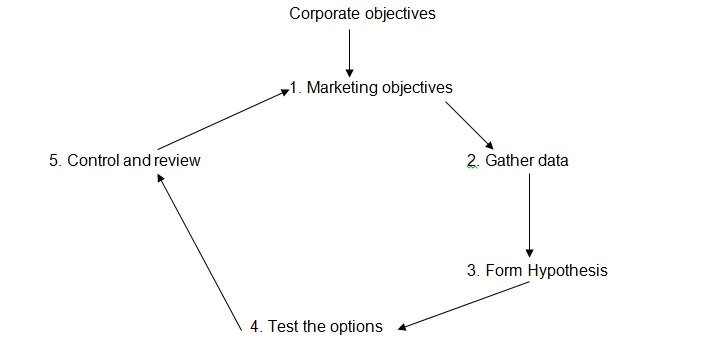
A company in the textile and apparel industry needs to carry out an extensive market analysis to determine the kind of products to produce. To gain a competitive advantage, a company should be sensitive to changes in fashion and the cultural diversity.
Differentiation
A company in the fashion industry should consider the kind of diversity that occurs in the market and the dynamic nature of apparel market. The full concentration on a given product or market segment may lead to huge losses due to increased associated market risks.
In order to avoid this, most companies have opted to deal in a variety of products with wide targeted segments in the market (Varey, 2002). The companies apply horizontal product differentiation where a product is given in different qualities (Stoneman, 2010, p. 161). A company can be seen to provide one product at different quality and prices in order to suite the financial capability of every consumer.
Deepening and Defense
The sensitivity of the management of a company to the changing market trends and the appropriate adjustment can enable customers to be glued to the product of the company. It has been observed that retaining the customers of a given company is harder than attracting new customers (Solomon, 2003, p.9). The products of the company need to have a legal brand protection.
The buyer behavior and the marketing mix by the company
Introduction
Whenever a consumer sets to buy a given product in the market for use, there is a level of satisfaction the consumer expects from the product. Some of these consumer needs are influenced by factors the individual taste and preference, fashion/style, social class and status, and culture (Stoneman, 2010, p. 22). Satisfied customers develop loyalty, as well as influence other new customers towards a particular brand; otherwise, they switch to rival brands.
The buyers’ behavior in the clothing industry is mainly driven by quality and fashion/style (Stoneman, 2010, p. 21). This eventually determines the prices of such products. The way the products of the company are located so that they can be accessed by the consumers will determine good will to be developed by the consumers. The consumers need to be aware of a given brand of product in the market. The kind of advertisements given on a product is able to convince a consumer to buy the product (Varey, 2002, p. 55).
Product
The difference in consumers’ financial abilities, fashions and style, culture, and the demographic factors has made Gap brand to provide a range of products in order to capture a larger market share. At its inception in 1969, the company mainly concentrated on jeans for the youths. The market forces that followed over the years saw the Gap brand expand its operations to include apparel for men, women and children.
Some of the main products include ‘denim, khakis, T-shirts, fashion apparel, accessories and personal care products for both men and women’ (The Gap Inc, 2009). Other products include maternity apparel, women’s underwear, sleepwear, loungewear, and sports apparel. The inclusion of a variety of products has given the company competitive advantage over other competitors like Polo. Some of the new arrivals are given below
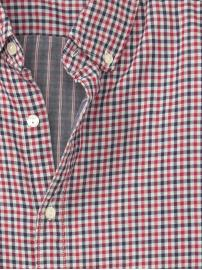
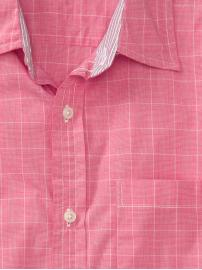
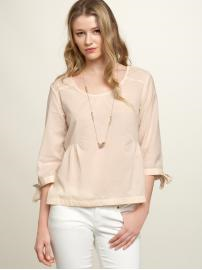
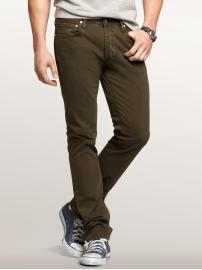
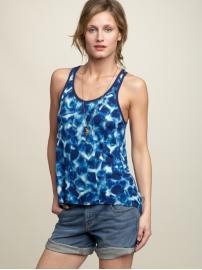
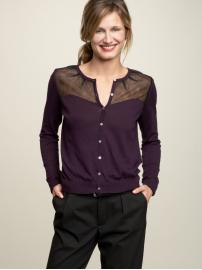
Place
The Gap brand was founded in 1969 with very few retail stores in the United States. The brand has established several stores all over the world. The company has increased the number of its retail stores rapidly over the years to meet the growing demand for their products.
The company also established online retail stores where customers could be reached over the internet. The online purchasing system is also available for other transnational apparel brands like Athleta and Piperlime. The table below shows the stores that the Gap brand had in some of the regions in the world.
Table. 1. Gap brand Store locations in 2009 and 2010.
Source: Adapted from Gap Inc Report 2009 (The Gap Inc.), p. 19.
Price
The Gap brand has taken into consideration the difference in financial abilities of every individual in their targeted groups of consumer. They have considered how social status and culture also influence the buyer behavior. The gap brand provides a variety of ‘classically styled, high quality, casual apparel at moderate price points’ (The Gap Inc, 2009).
The brand also has other outlet stores that provide the same category of products at relatively lower costs. In order to manage the prices, the company often employs a sourcing process whereby it selects garment manufacturers at their foreign locations and employs the citizens of these regions (Richardson 2004, p.91). This reduces the overall production cost allowing price reduction.
Promotion
The promotions of product sales had declined at the Gap in the recent past with a resulting decrease in sales for three consecutive years as from 2006 (The Gap Inc, 2009). However, the adoption of modern use of technology has rekindled the promotion process, which is currently being experienced. The company currently communicates to some of its customers over the internet. Some forms of promotion are carried out in this manner.
Advertisement forms the largest part of promotion in Gap; this is evidenced by the use of celebrities in launching and advertising its clothing lines and accessories. In addition, Gap has embraced the modern way of promotion that entails corporate social responsibility by taking part in various community projects. For instance, Gap has supported “human rights initiatives through its supplier education programs and a number of other projects and is a participant in the UN Global Compact” (Stats, 2011).
Moreover, Gap promotes its products through environmental programs such as “recycling for stores, use of wood from certified-sustainable forests for the flooring at its stores, as well as energy efficiency in lighting” (Stats, 2011). This is in realization that customers will often associate with companies that are concerned with their welfare. Indeed, this has greatly contributed to the growth of Gap brands in the market.
Marketing communications channels
Introduction
After defining a product and identifying the market segment that is to be targeted, there is need to identify the appropriate way through which the company will communicate to its potential customers (Wright, 2006, p.49). Customers need to be informed of the existence of a given brand products and the benefits that are associated with the use of such products.
There is need to inform the customers on the location of the company’s retail stores that can be conveniently accessed, as well as product prices and product lines available. An effective communication system is a two-way channel (Smith & Taylor, p.72), involving the organization and customers; therefore, there is also a need to provide a mechanism through which the customers can communicate their feelings on the quality of the products and the suggestions on how to improve such quality.
The medium that is used in the advertisement of a company product will influence the customer behavior towards the product. It is important to understand the target group and use the communication means that can reach a larger portion of the market segment.
The customer decision-making model
A customer will decide to use a product after certain considerations. The decision may be based on internal information that one has about the products or external information. The customer may have had a personal experience using the product and made decision in this context. He may have obtained the information from recent records. The external information sources from friends and relatives, sales promotions, and company advertisements also provide a way of evaluating a product by a consumer (Varey, 2002, p. 118).
In designing marketing advertisements, the companies need to understand how the consumers often react to the product diversity in the markets (Varey, 2002, p.317). The usual procedure that is followed by every consumer is to consider a variety of alternatives that are available for a given products.
There will always a tendency to prefer a quality product that is cost effective. Therefore, in designing the promotions, the companies need to emphasize the qualities of a product that make it unique in the market. The channel to be used should be that which is sensitive to demographic characteristics of the target population.
The Gap brand uses television and print media to communicate to its customers (The Gap Inc 2009). Use of TV is advantageous in that it is entertaining and the whole picture of the product can be figured out (Varey, 2002, p.182). The sales promotions as well as other forms of advertisements are performed through these media.
In designing the advertisements, they include some public renowned celebrities in order to attract the attention of the stylish group. Class and style are the key themes of Gap; however, Gap gives customer a wide range of choices by providing a variety of styles, both in modern and classic brands of clothing and accessories. The pictures below show a celebrity advertising Gap’s clothing.
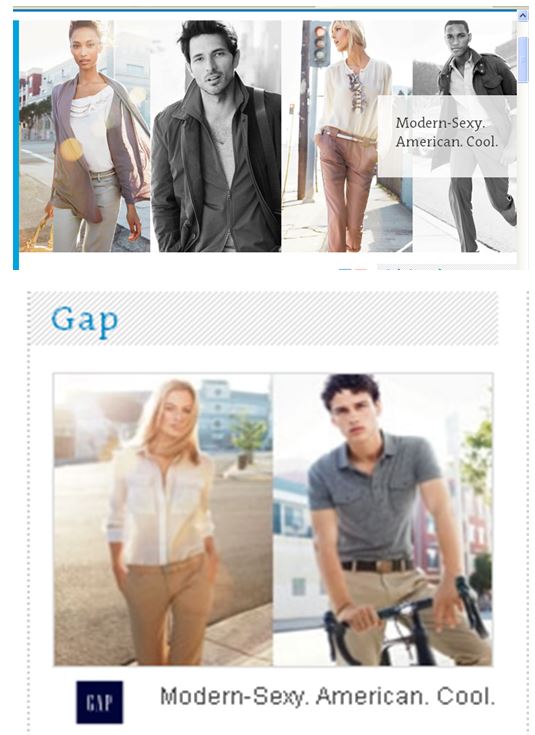
Diffusion
There are different ways through which a consumer can be motivated to admire a given service or product. Some consumers have a personal knowledge and principles that define what to be admired in a given service of product. Their attraction towards a service will be determined by how the products suit these perceived needs. Other consumers can develop a good will of product following the satisfaction that is seen in the friends and associates that use the products.
This category can be easily diverted towards another product brand. Diffusion refers to how a newly introduced product/idea/service is received and how it spreads in the market in a given geographic region (Smith & Taylor, p.84). The theory of diffusion describes how a newly acquired product or service spreads in a given region. The diffusion process is influenced by the social, political, and economic factors that prevail in the area.
The Gap has embraced change in fashion industry, while its quality products have enabled customers to develop and express a sense of style. Using a public figure in the advertisement by the company attracts the attention of many customers who may be prompted to spread the “gospel” to other friends and relatives. In this way, the Gap has managed to speed the rate at which its new products are exposed to the consumers.
Online sales
The buyers of a given product are also influenced by how convenient it is to obtain the products. The communication to the customers often includes a detailed description of the location of the retail stores that are close to them. It would be better still if a more convenient mechanism is adopted for those who are close to any store.
The use of internet has greatly promoted communication in business in the recent past. More of the consumer can be reached internationally through the internet. The effective use of internet is however affected by the kind of relations that is developed among the so-called “online community.”
The Gap brand communicates to some of to customers of the internet. The Gap Online that was introduced in 1997 is a web based store that provides products equivalent to other stores like the Gap, GapKids or GapBody. The online stores that is available at www.gap.com informs the customers on what is available at the stores and how to order for the products (Marston & Modarres 2002, p.6)
Reference List
Crow, K., 2002. Product Definition. Web.
Gap Inc. 2011. Gap. Web.
Kilduff, P., 2000. Evolving strategies, structures and relationships in complex and turbulent business environment: The textile and apparel industries of the new millennium. Journal of textile and apparel, technology and management, Vol1, Issue1. Web.
Marston, S. and Modarres, A., 2002. Flexible retailing: Gap Inc and the multiple spaces of shopping in the United States. A Journal from the Royal Dutch Geographical Society KNAG 2002, Vol.93 No.1 pp.83-89. Web.
Richardson, P., 2004. The New Wider World Course mate for CCEA GCSE Geography. Cheltenham: Nelson Thornes.
Rudra, S., 2008. Market segmentation, targeting and positioning. Web.
Smith, P. and Taylor, J., 2004. Marketing communications: an integrated approach. London: Kogan Page Publishers.
Solomon, M., 2003. Conquering consumer space: marketing strategies for a branded world. New York: AMACOM Div American Mgmt Assn.
Stats, J., 2011. Gap Inc. Organizational Research. Web.
Stoneman, P., 2010. Soft innovation: economics, product aesthetics, and the creative industries. Oxford: Oxford University Press.
The Gap Inc. 2009. Annual Report on Form 10-K. Web.
Varey, R. 2002. Marketing communication: principles and practice. London: Routledge.
Wright, R., 2006. Consumer Behaviour. Tunbridge Wells: Thomson Learning.